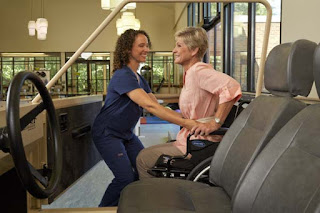Hierarchy of Mobility Skills

When someone undergoes an experience that requires them to participate in therapy, in most cases they have to regain confidence. Clients have to get comfortable in their abilities to perform their ADLs. Mobility is best defined as the ability to move freely. As a possession that most take for granted, it is not understood just how disabling it may feel to have reduced mobility or it taken from you completely. In the future as an occupational therapist, it will be our job to restore this confidence in our clients and watch them grow and reach their goals. The hierarchy of mobility skills listed in our notes, is set up in the form of a pyramid. At the base of the structure, there is bed mobility and at the very top is community and driving. As your patient builds confidence, they climb up the levels of the pyramid. The order of the steps did not exactly make sense at first, but after deliberation and more review the pieces started to add up. Bed mobility, being the first step, means th